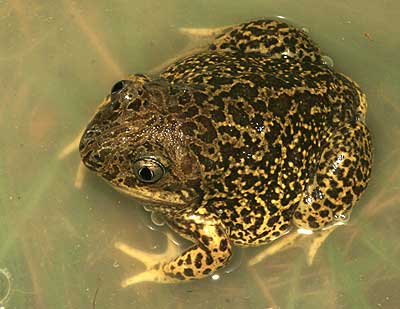Facts About Wagler's Spadefoot Toad
Pelobates cultripes: The Western Spadefoot Toad
Overview:
Pelobates cultripes, commonly known as the western spadefoot, Iberian spadefoot toad, Spanish spadefoot toad, or Wagler's spadefoot toad, is a remarkable species of toad within the Pelobatidae family. These toads are indigenous to regions of France, Spain, and Portugal.
Description:
The western spadefoot is a large, smooth-skinned toad, easily identifiable by its striking silvery-gold or greenish eyes with vertical pupils. A notable feature is the black, spade-like structure on its hind foot, which gives the toad its name. The toad's back is generally greyish-yellow with dark brown or greenish blotches and spots. They can grow up to 11 cm in length, making them larger and greener compared to their relative, the common spadefoot (Pelobates fuscus). The tadpoles of this species are notably larger than those of many other toad species.
Behavior:
Primarily nocturnal, the western spadefoot toad becomes especially active after rain. During the day, they hide in burrows that can be as deep as 20 cm, and they are skilled diggers. When threatened, they inflate their bodies and produce a sound similar to a kitten's meow.
Breeding occurs typically in temporary water bodies, which can sometimes be brackish. Males arrive at the breeding sites on wet nights, followed by females. The duration of the breeding season depends on rainfall, ranging from a few days to a month. During this period, these toads may also be active during the day. Males grasp females around the loins, and females can lay up to 7,000 eggs in bands. The eggs hatch in about two weeks, and tadpoles take approximately 4 to 6 months to develop. Predation and the drying of breeding ponds are common threats to their survival. Young toads reach maturity in about three years and can live up to 15 years. Males produce a distinct 'co-co-co' sound underwater, similar to a clucking hen, while females occasionally call as well.
Distribution:
Pelobates cultripes is primarily found in Spain, Portugal, and parts of France, in areas that do not overlap with the habitat of the common spadefoot. They prefer open areas with soft or sandy soils and can be found at elevations up to 1,800 meters.

 Portugal
Portugal